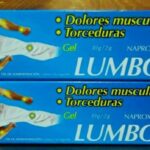How To Take Colchicine For Acute Gout

Acute gout is a painful and inflammatory condition that affects the joints. It is caused by the buildup of uric acid crystals in the joints, which leads to sudden and severe episodes of joint pain, swelling, redness, and tenderness. Gout most commonly affects the joint at the base of the big toe, but it can also occur in other joints such as the ankles, knees, wrists, and elbows.
The underlying cause of gout is usually an elevated level of uric acid in the blood, a condition known as hyperuricemia. Uric acid is a normal waste product that is produced when the body breaks down purines, which are substances found in certain foods and also produced by the body. When uric acid levels are high, crystals can form and deposit in the joints, triggering an inflammatory response.
Acute gout attacks typically come on suddenly, often at night, and are characterized by intense pain and swelling in the affected joint. The pain can be so severe that even the weight of a bedsheet can cause discomfort. The affected joint may also become warm, red, and tender to the touch. The attack usually reaches its peak within 24 hours and may last for a few days to a week before gradually subsiding.
The management of acute gout involves both treating the current attack and addressing the underlying cause to prevent future episodes. In this article, we shall be taking an in-depth look at colchicine one of the treatment options for acute gout.
What is colchicine?
Colchicine is a medication that is commonly used for the treatment and prevention of gout. It is derived from the autumn crocus (Colchicum autumnale) plant and has been used for centuries to relieve pain and inflammation associated with gout.
Colchicine was first isolated in 1820 by French chemists Pierre-Joseph Pelletier and Joseph-Bienaimé Caventou, and a purified active ingredient named colchicine was developed in 1833 by Philipp Lorenz Geiger.
Despite colchicine’s long history of use, it was not until 2009 that the U.S. Food & Drug Administration approved colchicine to treat gout and familial Mediterranean fever (FMF) under the Unapproved Drugs Initiative. Beyond gout and FMF, colchicine is widely used to treat a variety of dermatologic conditions, and its role is being investigated for the treatment of coronary artery disease and even COVID-19 infection.
How does colchicine work?
Colchicine is a medication that has been used for centuries to treat various conditions. It works by interfering with the process of inflammation in the body, specifically by targeting microtubules.
Here’s a simplified explanation of how colchicine works:
1. Inflammation Process: In response to injury or certain diseases, the body releases inflammatory substances that attract immune cells to the affected area. This causes redness, swelling, heat, and pain.
2. Microtubules: Microtubules are tiny structures within cells that play a role in various cellular processes, including cell division, movement, and organization. They are made up of proteins called tubulin.
3. Mechanism of Action: Colchicine binds to tubulin and prevents its polymerization, which is the process of tubulin molecules assembling into microtubules. By disrupting microtubule formation, colchicine inhibits several cellular processes involved in inflammation.
4. Inhibition of Leukocyte Migration: One of the main effects of colchicine is the inhibition of leukocyte (white blood cell) migration. Leukocytes are immune cells that play a significant role in the inflammatory response. By interfering with microtubules, colchicine reduces the ability of leukocytes to migrate to the site of inflammation, thereby reducing the inflammatory response.
5. Reduced Inflammatory Mediators: Colchicine also affects the release of inflammatory mediators, such as interleukins and tumor necrosis factor-alpha (TNF-alpha). These substances are involved in the activation and recruitment of immune cells, as well as the production of other inflammatory chemicals. Colchicine can decrease the production and release of these inflammatory mediators, further dampening the inflammatory response.
By targeting microtubules and inhibiting leukocyte migration and the release of inflammatory mediators, colchicine helps reduce the symptoms of inflammation, such as pain, swelling, and redness. It is important to note that the exact mechanism of action of colchicine is not fully understood, and there may be additional effects that contribute to its anti-inflammatory properties.
How To Take Colchicine For Acute Gout
When taking colchicine for the treatment of acute gout, it’s essential to follow the prescribed dosage and instructions provided by your healthcare professional and adhere to the following:
1. Timing: It is crucial to start colchicine treatment as early as possible after the onset of a gout attack. The effectiveness of the medication is highest when taken within the first 24 hours.
2. Initial Dose: The typical recommended starting dose for colchicine in the treatment of acute gout is 1.2 milligrams (mg) followed by a smaller dose of 0.6 mg one hour later. This initial “loading dose” helps to alleviate pain and inflammation associated with the gout attack.
3. Follow-up Doses: After the initial loading dose, a maintenance dose of 0.6 mg of colchicine is often prescribed. This dose may be taken once or twice a day until the gout attack subsides, or as directed by your healthcare provider.
4. Maximum Daily Dose: It’s important not to exceed the maximum recommended daily dose, which is typically 1.8 mg for the treatment of acute gout. Taking higher doses can increase the risk of side effects.
5. Duration: The duration of treatment with colchicine for acute gout can vary. Your healthcare professional will determine the appropriate duration based on the severity of your symptoms and your response to the medication.
6. Take with Food: Colchicine is usually taken with food to minimize the potential for gastrointestinal side effects. Taking it with a meal or snack can help reduce stomach upset.
7. Avoid Grapefruit: Grapefruit and grapefruit juice may interact with colchicine and increase the risk of side effects. It’s advisable to avoid consuming grapefruit products while taking colchicine.
Remember, it is crucial to consult your healthcare professional for personalized advice and guidance on how to take colchicine for acute gout. They will consider your specific medical condition, other medications you may be taking, and any potential contraindications or precautions.
How long does it take for colchicine to work?
The time it takes for colchicine to work can vary depending on the condition being treated and the individual’s response to the medication. Colchicine is commonly used to treat gout, an inflammatory condition caused by the deposition of uric acid crystals in the joints.
When taken to treat an acute gout attack, colchicine typically starts working within 12 to 24 hours. The medication helps reduce pain, swelling, and inflammation associated with the attack. The maximum effect is usually achieved within 48 to 72 hours of starting treatment because it reaches peak plasma levels between 1–3 hours after oral administration
For long-term use in gout prophylaxis (prevention), colchicine may take several weeks or even months to fully exert its effect. It works by reducing the production and deposition of uric acid crystals in the joints over time, which helps prevent future gout attacks.
It’s important to note that colchicine should be used as directed by a healthcare professional. The dosage and duration of treatment will depend on the specific condition being treated and individual factors. It’s always best to follow the instructions provided by your doctor or pharmacist.
Non-Medicinal Ways To Manage Acute Gout
In addition to medication, there are several non-medicinal ways you can manage acute gout symptoms. These approaches can help alleviate pain, reduce inflammation, and promote overall well-being. Here are some non-medicinal strategies for managing acute gout:
1. Rest the Affected Joint: During an acute gout attack, it’s important to rest the affected joint to minimize further irritation and allow the inflammation to subside. Avoid putting weight on the joint and try to keep it elevated whenever possible.
2. Apply Ice Packs: Applying ice packs to the affected joint can help reduce pain and swelling. Wrap an ice pack or a bag of ice in a thin cloth and apply it to the joint for about 15 minutes at a time, several times a day.
3. Stay Hydrated: Drinking an adequate amount of water helps flush out excess uric acid from the body, which can help prevent gout attacks. Aim to drink at least 8 cups (64 ounces) of water per day. Avoid sugary drinks and alcohol, as they can increase uric acid levels.
4. Follow a Healthy Diet: Making dietary changes can play a significant role in managing gout. Avoid or limit high-purine foods such as organ meats, shellfish, red meat, and alcohol, as they can increase uric acid levels. Instead, opt for a diet rich in low-fat dairy products, vegetables, fruits, whole grains, and lean proteins.
5. Apply Heat: Once the initial inflammation subsides, applying heat to the affected joint can help relax the muscles and improve blood circulation. Use a heating pad or take a warm bath to alleviate discomfort.
6. Maintain a Healthy Weight: Obesity is associated with an increased risk of gout and can worsen symptoms. Maintain a healthy weight through regular exercise and a balanced diet. Losing weight, if necessary, can help reduce the frequency and severity of gout attacks.
7. Avoid Trigger Factors: Identify and avoid trigger factors that can contribute to gout attacks. These may include certain foods, alcohol, stress, and dehydration. Keep a journal to track your symptoms and identify patterns or triggers.
8. Consult a Healthcare Professional: While these non-medicinal strategies can be helpful, it’s important to consult with a healthcare professional for an accurate diagnosis and personalized advice. They can provide guidance on lifestyle modifications, suggest appropriate exercises, and help you develop a management plan tailored to your specific needs.
Remember, acute gout management should be approached comprehensively, combining both non-medicinal strategies and appropriate medical treatment as prescribed by your healthcare professional.





